JUNE 6, 2012 PROGRAM - SUSAN GROGAN
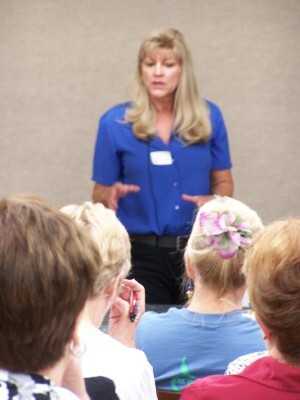
Program:
Susan Grogan gave the program this month on painting watercolors on gesso. She decided that it would be something different for all of us.
Susan is an accomplished artist in many different mediums including pencil, acrylics, watercolor and pen and ink. She has won many awards for her art work including best of Show at Miami Twp. show and most recently a banner contest. The banner will be displayed across Winton Rd.
The program was started with the process of putting gesso on your watercolor paper. It was recommended that you use 140 lb. paper and a good gesso. The nice thing about using the gesso technique is that you can actually cover an old painting. Susan covered the paper with gesso by using “X” strokes. She then layered wax paper over it to smooth out some of the texture. This step can be eliminated if you like the very rough texture.
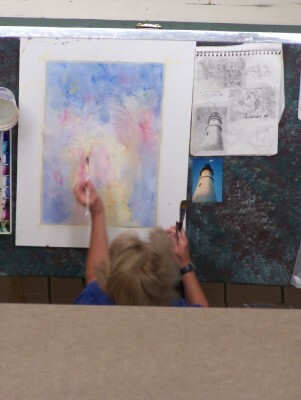
Her first step after the gesso dried was to cover the paper with a medium value wash. After the wash has dried you can then draw your design. Using a subject that has a lot of contrast is helpful when painting on gesso. The whites in your value sketch can be lifted out after the background has dried. Susan lifted out the paint by wetting the surface with a wet brush then scrubbing the paper and lifting the paint. After you have lifted the paint in the areas that need it, it’s time to start putting in the other values.
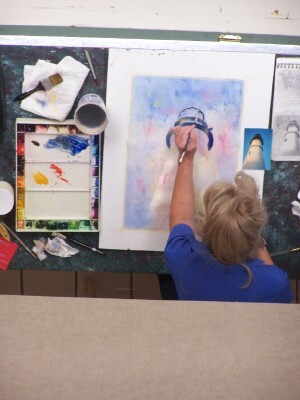
Susan gave us some helpful hints when painting on gesso. It’s important to keep the surface wet when you are laying in the background. The easiest way to do this is to mist the paper if it appears to be drying too fast. That way you will not have hard edges in the color. Don’t isolate a color in the background; be sure to sprinkle it other places. When painting on gesso with watercolors the paint will dry much lighter. It is easy enough to go over areas again to achieve the value that you want. Remember that the most important thing is value in a painting rather than making the subject a certain color.
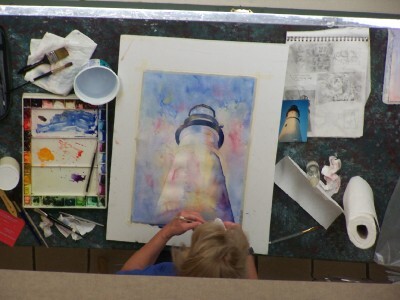
Even though Susan said she was a bit nervous teaching a big group she did an amazing job. Painting on gesso is a slow process but she kept our interest with all her tid bits of information about painting, paints and the gesso technique. I think we all have a new outlet for some of our discarded paintings.
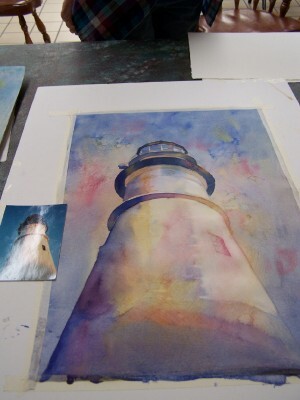
Thank you Susan for the great demonstration on a different watercolor painting.

